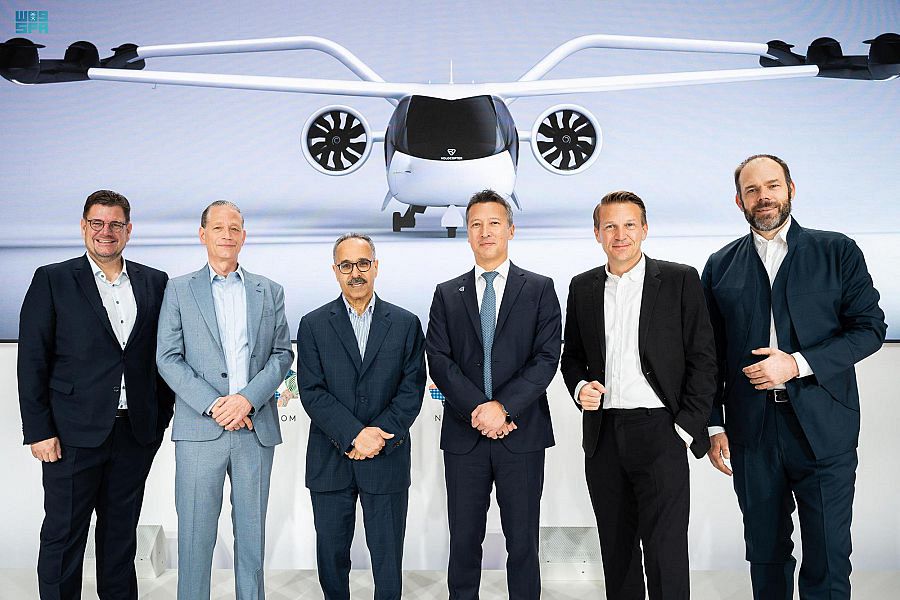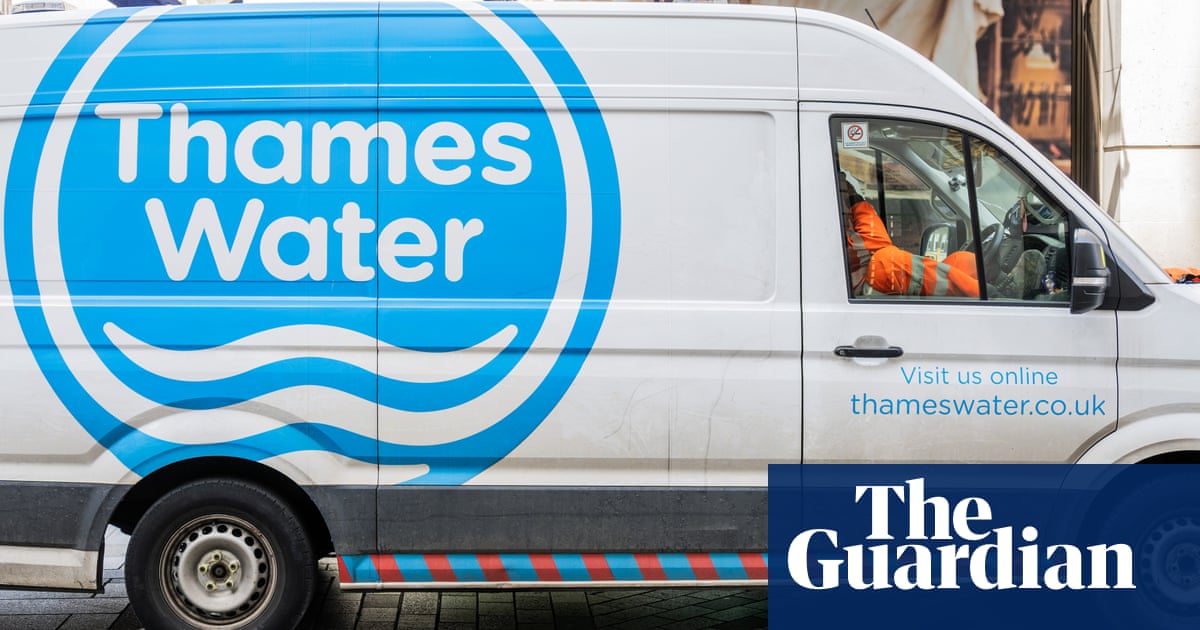
The megacity of São Paulo is home to more than 22 million people, most of whom must endure its notorious traffic to get anywhere. For decades, however, corporate executives and the super-rich have soared above these congested streets in one of the world’s largest fleets of urban helicopters, which make as many as 1,300 flights every day. While the choppers may be – as one businesswoman declared – “a necessary tool” for some, others argue they are little more than a carbon-belching nuisance.
“Helicopters are a massively noisy, polluting form of transportation,” said Marc Tembleque Vilalta, a vice-president at Avolon, a Dublin-based aircraft leasing company that sees the São Paulo helicopter scene as ripe for disruption. Last month, the company signed a deal to begin supplying a Brazilian airline with electric air taxis, or eVTOLs (short for “electric vertical takeoff and landing”) by 2025.
The aircraft at the center of the deal is the VA-X4, a zero-emission five-seater manufactured by the UK company Vertical Aerospace. With a battery only 20% to 50% larger than an electric sedan’s and a range of 100 miles, it claims to have a lighter environmental impact than any existing form of air travel. Rides will also be accessible even to people who don’t count themselves among the business elite, according to Avolon, which says that initial pricing will be on par with land-based ride-hailing services, with a target of about $1 a passenger mile.
“We will see helicopters being the first disrupted market, but longer term we see eVTOLs disrupting automobiles,” Tembleque Vilalta predicts. “These trips will be a fraction of the cost of a helicopter at a fraction of the time of a taxi.”
The megacity of São Paulo is home to more than 22 million people, most of whom must endure its notorious traffic to get anywhere. For decades, however, corporate executives and the super-rich have soared above these congested streets in one of the world’s largest fleets of urban helicopters, which make as many as 1,300 flights every day. While the choppers may be – as one businesswoman declared – “a necessary tool” for some, others argue they are little more than a carbon-belching nuisance.
“Helicopters are a massively noisy, polluting form of transportation,” said Marc Tembleque Vilalta, a vice-president at Avolon, a Dublin-based aircraft leasing company that sees the São Paulo helicopter scene as ripe for disruption. Last month, the company signed a deal to begin supplying a Brazilian airline with electric air taxis, or eVTOLs (short for “electric vertical takeoff and landing”) by 2025.
The aircraft at the center of the deal is the VA-X4, a zero-emission five-seater manufactured by the UK company Vertical Aerospace. With a battery only 20% to 50% larger than an electric sedan’s and a range of 100 miles, it claims to have a lighter environmental impact than any existing form of air travel. Rides will also be accessible even to people who don’t count themselves among the business elite, according to Avolon, which says that initial pricing will be on par with land-based ride-hailing services, with a target of about $1 a passenger mile.
“We will see helicopters being the first disrupted market, but longer term we see eVTOLs disrupting automobiles,” Tembleque Vilalta predicts. “These trips will be a fraction of the cost of a helicopter at a fraction of the time of a taxi.”
The megacity of São Paulo is home to more than 22 million people, most of whom must endure its notorious traffic to get anywhere. For decades, however, corporate executives and the super-rich have soared above these congested streets in one of the world’s largest fleets of urban helicopters, which make as many as 1,300 flights every day. While the choppers may be – as one businesswoman declared – “a necessary tool” for some, others argue they are little more than a carbon-belching nuisance.
“Helicopters are a massively noisy, polluting form of transportation,” said Marc Tembleque Vilalta, a vice-president at Avolon, a Dublin-based aircraft leasing company that sees the São Paulo helicopter scene as ripe for disruption. Last month, the company signed a deal to begin supplying a Brazilian airline with electric air taxis, or eVTOLs (short for “electric vertical takeoff and landing”) by 2025.
The aircraft at the center of the deal is the VA-X4, a zero-emission five-seater manufactured by the UK company Vertical Aerospace. With a battery only 20% to 50% larger than an electric sedan’s and a range of 100 miles, it claims to have a lighter environmental impact than any existing form of air travel. Rides will also be accessible even to people who don’t count themselves among the business elite, according to Avolon, which says that initial pricing will be on par with land-based ride-hailing services, with a target of about $1 a passenger mile.
“We will see helicopters being the first disrupted market, but longer term we see eVTOLs disrupting automobiles,” Tembleque Vilalta predicts. “These trips will be a fraction of the cost of a helicopter at a fraction of the time of a taxi.”
It’s an optimistic claim, one that might conjure thoughts of flying cars, that perennial cliche of science fiction. But Avolon, which followed its São Paulo deal by announcing a partnership with Japan Airlines, is only one of several companies now in a very real race to meet the demand for quieter, safer and less-polluting urban air travel.
They include international names like Honda and Airbus as well as startups such as the German firm Volocopter, which has agreements to bring eVTOLs to Paris and Singapore in the next few years, and to supply Japan Airlines with air taxis and cargo drones. Vertical, maker of the VA-X4, has received millions in grant funding from the British government and plans to float on the New York Stock Exchange this year. Put it all together and, according to Morgan Stanley, eVTOLs represent a global market that could be worth up to $1tn by 2040.
The coming eVTOL revolution is partly premised on environmental friendliness: if its battery is charged with renewable power, an eVTOL’s operation will be carbon-neutral. Even if the grid is supplied by coal, Avolon has calculated that charging a VA-X4 would still generate no more than a fifth the emissions of a comparable helicopter.
There is research that backs up claims that electric air taxis may sometimes be greener than ground-based automobiles. A team at the University of Michigan recently calculated that a fully loaded eVTOL with three passengers would have 52% lower emissions than a gas-powered car and 6% lower than an electric car, given the cars’ average occupancy of 1.5 people. The vehicles “offer fast, predictable transportation and could have a niche role in sustainable mobility”, according to the study.
But the buzz around eVTOLs has also stirred up concerns that so-called “urban air mobility” may be just the latest distraction from cities’ real problems and that, despite promises that this new mode of transportation will be both accessible and climate-friendly, eVTOLs may actually contribute to the inequities and environmental ills plaguing urban areas around the world.
“There are all kinds of problems right now that we need to figure out, before we start fussing around with this,” said Geoff Boeing, a professor of urban planning at the University of Southern California, who argues that cities should focus on expanding and improving public transit and pedestrian and bike infrastructure before they open their skies to “transportation segregation, where if you can pay for it, you can skip the line”.
Kevin DeGood, director of infrastructure policy at the Center for American Progress, a liberal thinktank, went further in a 2020 report that came out strongly against the “techno-utopian” dream that eVTOLs represent. “Unfortunately, flying cars represent the technological apotheosis of sprawl,” he wrote, arguing that their adoption “will unleash development of pristine lands heretofore unattractive because of the limitations of distance and travel time”.
The idea that transportation advances exacerbate sprawl is backed up by research. As speedier modes have been introduced over the centuries – from trains to streetcars to personal automobiles – workers’ typical commute times tend to remain stable, at about 30 minutes. That’s because faster options prompt people to move further from city centers. The principle, known as Marchetti’s Constant, has shaped the development of cities around the world for thousands of years. It’s what makes the modern suburbs possible. But suburbanites have a greater impact on the environment than city-dwellers in a dense urban core, and the difference is even greater for distant exurbs.
“You’re now living in a place that probably doesn’t have as good public transit, and you probably need to drive to most places,” said Elizabeth Irvin, a transportation analyst at the Union of Concerned Scientists, a left-leaning science advocacy group. “There might be a need to build more roads, and it all has a greater impact on land that was previously natural areas.”
Beyond land use, mass adoption of this new technology could have unintended consequences for overall fossil fuel consumption even if it does lure drivers off the road. Reducing congestion can paradoxically increase traffic, if it makes driving more attractive to people who would have previously chosen other modes – a phenomenon known as induced demand. “Certainly looking to replace combustion engines with electric vehicles is a positive,” Irvin said. “But from an environmental perspective, it’s just not the whole picture.”
Still, city leaders around the world see an advantage in preparing for the apparently inevitable arrival of eVTOLs and for whatever unintended consequences might come along with them.
Like São Paulo, Los Angeles is a sprawling megalopolis known for its monumental traffic jams, which celebrities and business tycoons have long avoided with helicopters. That makes it a prime target for eVTOL developers, a fate that Mayor Eric Garcetti has embraced. Last year, LA teamed up with the World Economic Forum to produce a report called Principles of the Urban Sky, laying out guidelines and goals for urban air policy and regulations. And last December, Garcetti announced the creation of a local initiative to prepare for an eVTOL introduction as soon as 2023.
Los Angeles learned hard lessons from the sudden appearance of other new transport modes, said Sam Morrissey, executive director of the non-profit Urban Movement Labs, which Garcetti created in 2019 and spun off from City Hall last year. Studies have shown that ride-hailing services draw riders from transit and make automobile traffic worse, as drivers cruise around waiting for fares. Meanwhile, e-scooters stirred up concerns about safety and confusion over whether they belonged on the sidewalk or the street. Creating an eVTOL policy in advance could help the city avoid those pitfalls and take advantage of opportunities to improve overall transportation equity and sustainability.
“We have an opportunity to plan for this, so we’re exploring the best way to integrate this new technology into the existing transportation fabric,” said Clint Harper, the non-profit’s urban air mobility fellow. “We have gaps in the current transportation system that maybe we can be of service in trying to close.” That could mean requiring vertiports at train stations, or using eVTOLs to alleviate freeway traffic by combining air mobility with a congestion pricing scheme for cars. New revenues could even fund fare-free buses or trains.
“If we do this in the right way, we can actually increase transit ridership and keep people from reverting to personal automobile travel.” Morrissey said. “The state and the county and the city all have very aggressive and very clear climate sustainability goals. And we’re trying to think of that complete transportation experience, end to end.”












